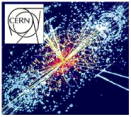Combined LHC machine + experiments workshop to:
- review the experience from TEVATRON/RHIC/HERA
- see what we can expect and optimise from the machine side
- see what the LHC experiments require and provide as signals for optimisation
Work together to optimise the running conditions aiming at:
- safe and stable operation with tolerable backgrounds and radiation
- optimisation of the physics potential (maximum integrated luminosity with acceptable background)
Notes for writeups and proceedings
=====================
It was agreed to prepare written workshop proceedings in "Chamonix workshop" like style, with :
1. Short write ups of each talk by the speaker, about 3 - 5 pages each - to be submitted to the scientific secretaries of the session. In particular for the speakers from outside CERN - please include references or links to relevant talks and papers.
2. Short write up of the discussion sessions by the scientific secretaries - send to the organisers
3. Short written summary by the organisers - H.B. and M.F-L. - and AB-Seminar at CERN on 15 May.
http://ab-seminar.web.cern.ch/AB-seminar/talks/AB.Seminar.bgd1.pdf
http://ab-seminar.web.cern.ch/AB-seminar/talks/AB.Seminar.bgd2.pdf
Format: The format is the same as the Chamonix and Accelerator Conferences, and can be found at
http://accelconf.web.cern.ch/AccelConf/JACoW/templates/templates.htm
For all contributions, please use the A4 version of this template.
Choose timezone
Your profile timezone:
